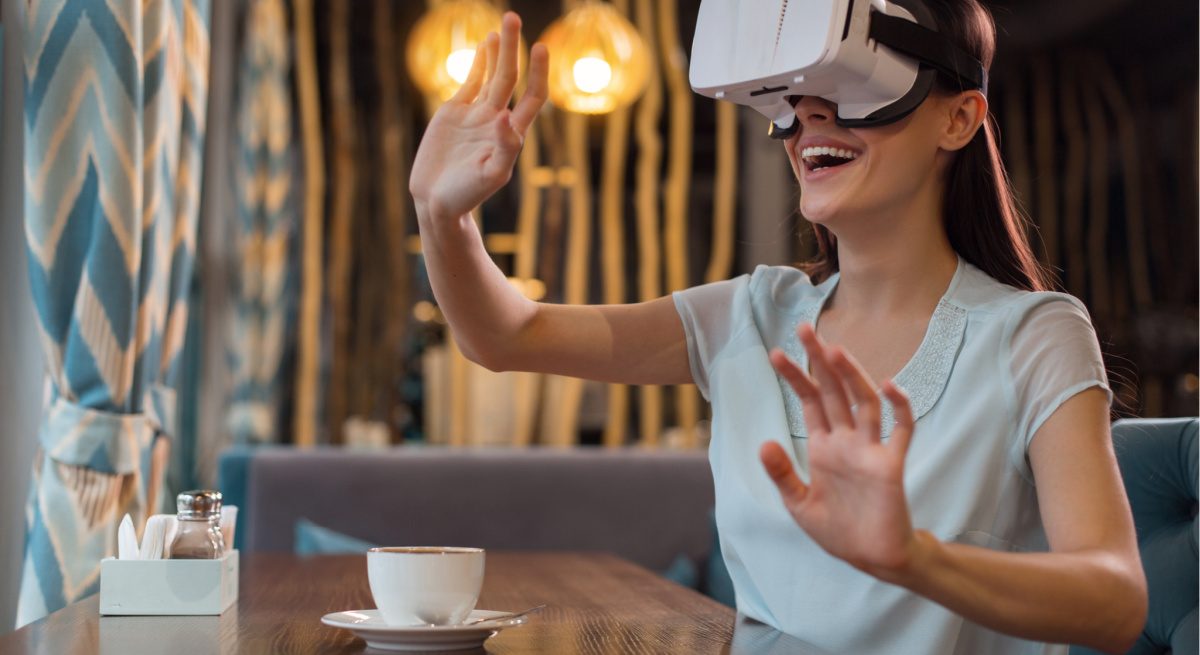How AR Menus Promote Craveability
3 Min Read By Mike Cadoux
The food and restaurant industry has been steadily moving toward greater visualization of menus options. Plain text evolved into beautiful food photography and video boards. The next phase in the advancement of food imagery will be in the application of 3D and Augmented Reality (AR) menus.
AR technology enables the customer to use their own smartphone to display immersive 3D models onto a surface in front of them. The phone will scan the surface and place the menu item on it, as if it's really “there”. Now the phone becomes a portal into a digital world. The user can inspect the dish fully, zoom in and out, turn it to see all aspects. The level of food transparency goes up greatly, it's no longer just a hero shot from a specific angle. With the explosion of Instagram and Google photos of cuisine, customers are already gaining a clearer picture of the actual status of menu items. Viewing in AR allows one to have an even more intimate notion of what they are about to eat, which has been found to be a good thing.
By thinking of AR as activating the lizard brain – we see the delicious food in front of us, think it's there, and crave it.
Viewing cuisine in AR has recently been studied by the Said Business School at Oxford. They found that utilizing an AR menu allowed the customer to more fully understand what it would be like to eat the dish, enhancing what they call “mental simulation." It can be understood by thinking of AR as activating the lizard brain – we see the delicious food in front of us, think it's there, and crave it. Their results showed higher check averages, greater craveability, and more positive word of mouth.
The authors write, “Contextual visual cues…increases the viewers overall evaluation and purchase intentions.” Their study involved dessert, a high margin item that most restaurants desire to push. They found an increase of 112 percent in sales for those viewing their dessert in AR.
And it wasn’t just for a more tech-savvy Gen Z crowd. They found that, “Diners with both high and low levels of familiarity with AR technology responded the same.” Smartphones are built to be intuitive and they have designed AR experiences to be the same.
The technology exists today to create beautiful and lifelike AR menus. Large chains such as Panera Bread, Subway and Domino’s have all created AR experiences with their menu offerings. They made their first forays on social media. Snapchat, Instagram and Facebook were the pioneers in AR adoption. First it started with cartoon tiaras, and now we can activate a lifelike 3D model of a restaurant’s offering directly out of their apps. People love it and engage with it for long periods of time (by social media standards).
Panera’s activation of their coffee and breakfast menu had an average play time of about eight seconds–that’s really good. More astoundingly, 25 percent of people who engaged with it visited a cafe’. There is certainly some sheen still on first movers who can engage a normally tough to reach audience, but the Oxford study shines a more firm light on the deep effectiveness of AR for food. The success wasn’t a surprise.
A restaurant or brand can push their own content to the customer. They would be wise to utilize all the smartphones capabilities and showcase their food with the next-generation of content.
Widespread adoption of AR still hasn’t occurred, but the movement to more digital ordering has surely accelerated. This has been aided by advances of technology, allowing web-based AR. Both iOS and Android now have robust AR platforms, so a picture thumbnail on a website can be replaced by a 3D model and an AR experience.
We are in the middle of an arms race featuring the biggest technology companies in the world (Apple, Google, Microsoft, Facebook, etc.) fighting for supremacy in this generational technology. They have invested billions of dollars and there is seemingly a new advancement weekly. With such capital and inertia behind it, increased saturation of AR is a good bet.
The pandemic has already accelerated the use of phone-based menus. QR codes pushing to digital experiences are becoming ubiquitous. Early adoption of AR was hindered by the problem of getting the experience to the customer. People are loath to download apps, and delivery platforms had to service thousands of restaurants, most of which wouldn’t have access to 3D models. Now a restaurant or brand can push their own content to the customer. They would be wise to utilize all the smartphones capabilities and showcase their food with the next-generation of content.
The world is changing and companies are innovating rapidly. More and more of our interaction with brands is happening on the phone. Soon you’ll see innovative menus with Augmented Reality capabilities – and it’ll make you hungry.


